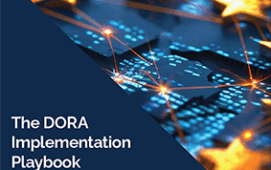The Financial Conduct Authority (FCA) has released a report on the supervision of algorithmic trading that focuses on five areas of algo trading compliance and highlights good and bad practice observed from cross-firm reviews.
The FCA report coincides with publication of a consultation paper by the Prudential Regulation Authority (PRA) on proposed expectations regarding a firm’s governance and risk management of algorithmic trading. The FCA and PRA will work together to ensure a coordinated approach going forward.
The FCA report considers the use of algorithms for a number of purposes across trading activity, including Markets in Financial Instruments Directive II. It notes that while automated technology brings significant benefits to investors, including increased execution speed and reduced costs, it can also amplify risk, making it essential that key oversight functions, including compliance and risk management, keep pace with technological advancements.
The five areas of focus and key objectives, based on the FCA’s review findings, and with consideration of MIFID II requirements, cover:
- Defining algorithmic trading
Key objective: To ensure firms establish an appropriate process to identify algorithmic trading, manage material changes and maintain a comprehensive inventory of algorithmic trading across the business - Development and testing
Key objective: To ensure firms maintain robust, consistent and well understood development and testing processes that identify potential issues across trading algorithms prior to full deployment - Risk controls
Key objective: To ensure firms develop suitable and robust pre- and post-trade controls to monitor, identify and reduce potential trading risks across algorithmic trading activity - Governance and oversight
Key objective: To ensure firms maintain an appropriate governance and oversight framework that demonstrates effective challenge from senior management, risk management and compliance on algorithmic trading activities - Market conduct
Key objective: To ensure firms appropriately consider the potential impact of their algorithmic trading on market integrity, monitor for potential conduct issues and reduce market abuse risks.
Megan Butler, director of supervision, investment, wholesale and specialist, at the FCA, says: “This report is relevant for all firms developing and using algorithmic trading strategies in wholesale markets. Firms should consider and act on its content in the context of good practice for their business.”
Subscribe to our newsletter




